
Steve Jenner has been contributing to Music Riot for many years now. He’s a huge fan of all sorts of music and he’s been a radio station manager and presenter for decades. Over the last couple of years, he’s achieved a lifetime ambition by securing regular gigs on Radio Caroline including proper live shows with record decks and everything from the Ross Revenge moored at Blackwater Estuary; there is no such thing as too old. Here’s Steve’s take on having a chance to play new music again on air.
As you may or may not know, I’m a presenter on Radio Caroline’s two oldies channels, Flashback and Radio Caroline North, which recall the halcyon days of ‘the pirates’ and this year I’ve been given the opportunity to go out to and present shows from their original broadcast boat the Ross Revenge, moored in the Blackwater Estuary just off Essex, and it has just been the most remarkable experience. However! In a year of ‘firsts’ I found myself playing new music on the radio for the first time in years when the organisation asked me to ‘sit in’ temporarily for a number of presenters on Radio Caroline’s main ‘Album Channel’, which features both classic and contemporary album music. Well, it doesn’t so much feature it as scream it out via 4000 watts on 648AM (AM rock, eh? Who thought THAT would be making a full-on reappearance in the broadcast environment at this stage in the game?) as well as all the usual digital armaments (apps, online, phone, Alexa, you name it we’re on it.) So, here’s my High Fives featuring musical airplay delights which have glowed briefly but brightly for me this year…
Todd Rundgren – ‘Puzzle’
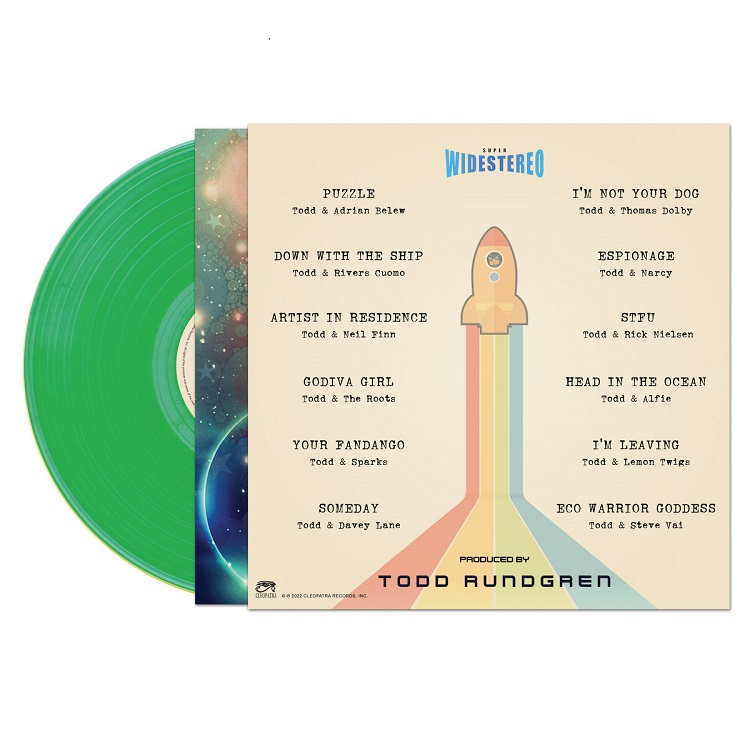
This is just gorgeous. Taken from his album ‘Spaceforce’ it is a sumptuous wallow in modern recording techniques allied to great writing from someone who knows how music works and always did. Glass of wine/box of chocs in the bath stuff. It has hooks which positively tear the flesh but do so totally painlessly. Hear it once and you don’t forget it in a hurry. Better digitally online than on AM, I would venture but honestly, if it was being cranked out of the North Sea at stupid o’ clock at night to the accompaniment of crystal set whistle and fade, you’d have to have some.
Bernie Marsden – ‘Na Na Na Na’
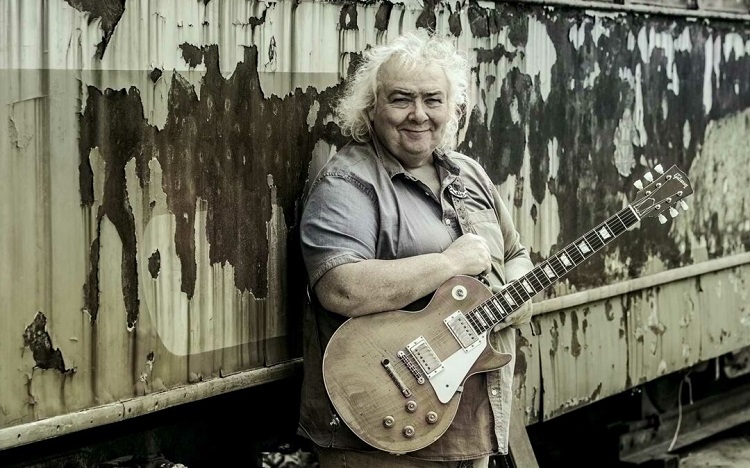
This isn’t gorgeous and yes I know I’ve just been banging on about how lovely it is to be playing new music on Radio Caroline’s main channel. BUT it’s a new cover, from an album called Trios released earlier this year by a guy who in rock ‘n’ roll terms is a national treasure to many due to his work with Whitesnake. Bernie Marsden has been hammering out this stuff with customary joy and gusto since Noah floated the Ark and the fact that he’s chosen a sassy, trashy old Cozy Powell hit 45 as an opportunity to revisit the spirit of former glories is alright by me. Very alright by me. A spirited thrash which deserves praise just for having the brass balls to cover the thing in the first place, I so enjoyed playing this even though I knew it wouldn’t be universally met with similar enthusiasm. Sometimes you just gotta!
Tedeschi Trucks Band – ‘Soul Sweet Song’
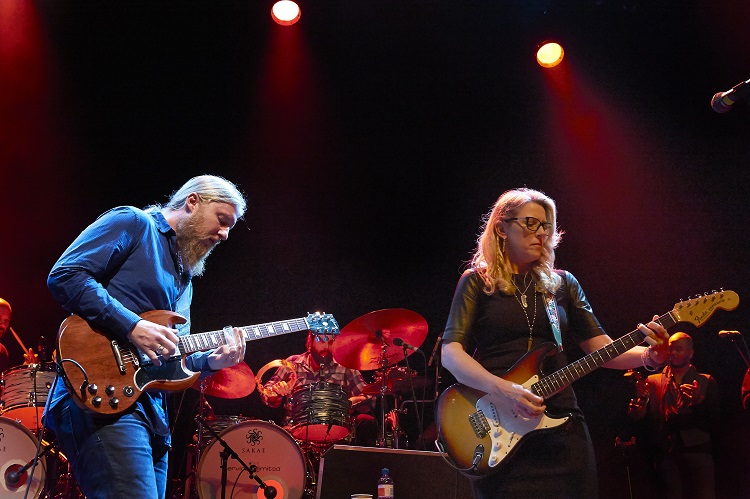
These have been knocking out class music for a while now and it is great to see the increasing evidence that more and more people fitted with ears as standard are realising they’re in the presence of something rather special here. This is by no means their most popular song or in many respects a standout track but boy, does it programme beautifully. The sort of song that Raises The Tone, just by being there on the playlist. And I’m told that they’re That Good live as well. Highly unlikely many who hear this will actively dislike it; and many love it, that much is already clear.
Ricky Ross – ‘I Was The Beatles’
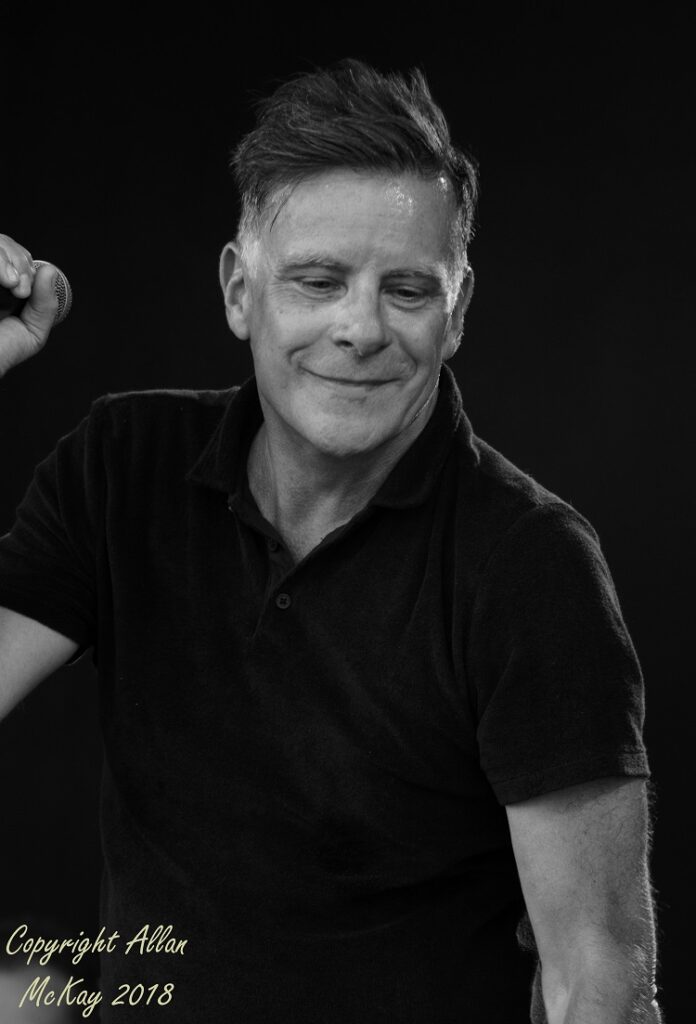
Just the voice, just the song. Just the piano with a bit of a string arrangement dropped on top. Recorded at his house with strings and brass bits added later, ‘Short Stories Volume 2’ appeared on Cooking Vinyl earlier this year. Not much on the face of it, it’s a song which drips loss and longing for a past which remains just out of reach to us all, it positively aches with the weight of lost love and friendship and potential unfulfilled. It has all the haunting quality of Deacon Blue’s cover of ‘What Do You Get When You Fall In Love’ but it’s an original song, even though it is shot through with intentional echoes and reminders. Delightful.
Dr. Feelgood – ‘Damn Right I Do’
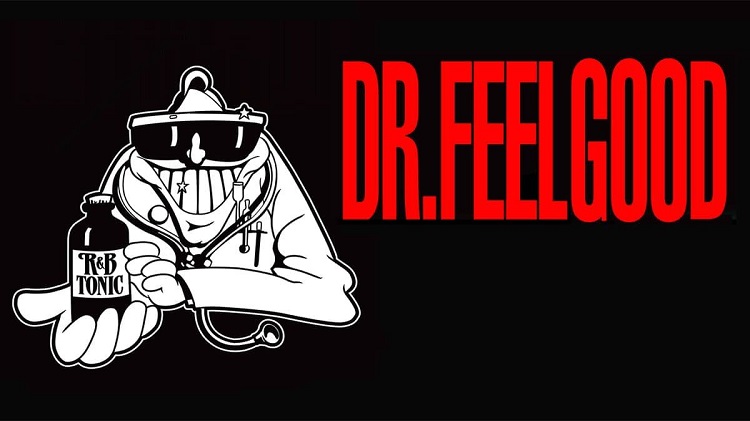
In truth I don’t know if this song was ‘A-listed’ by Radio Caroline’s main album channel but I do know that various tracks from this, their latest album and first for ages, have seen considerable airtime on the station with a number of our presenters. I was present at a live showcase of the by the band at their stomping ground of Canvey Island this winter; as chance would have it this was shortly before Wilko died. There are those who say it doesn’t sound like original Feelgood, isn’t the original line–up and all the usual stuff but if you park that for a minute and just listen, this title track in particular in full–on, direct and punchy ‘attack’ mode has juke-box classic stamped all over it. Virtually no such thing now of course in any meaningful sense but certainly grabs the attention as a proper ‘45’ should as it leaps out of the radio at you.
And if you’d like me to leap out of the radio at you and play you some new music, I’m next scheduled to feature on the main Radio Caroline album channel on 648AM and all the smart stuff on New Year’s day at 10AM through until 1PM, as I ‘sit in’ for Phil Meek. I will be both ringing out the old and ringing in the new, the way you do…
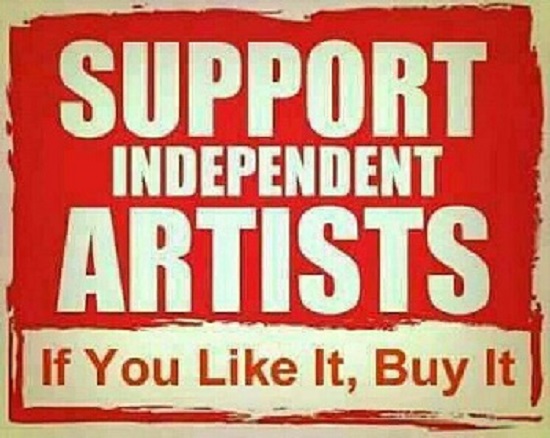
The Guardian published an article a couple of weeks ago by Tim Burgess of The Charlatans about the state of the music business in the light of Brexit, streaming and downloads. It’s an interesting read as far as it goes and it set the cogs whirring about why we got here, where we go next and will it be better or worse, or just different.
In my lifetime, the music business has been turned upside down. In the seventies, bands went out on tour to build up a following and to promote singles and albums, which is where the real money was. If you’ve survived this long and remember all this, bear with me, it’s worth getting some historical context. No internet, no mobile phones, only three TV channels and (until October 1973) no commercial radio. So you were left with the pirates like Caroline and the erratic reception of overseas stations like Luxembourg to let you know about new music. And the music press…
Every week I bought the NME, Melody Maker and Sounds and my paper round meant I could sneak a look at Blues & Soul and Disc/Disc and Music Echo as well. By 1973, with a bar job and a Saturday job with an entertainment agent booking acts for local pubs and clubs, I had a few bob to spend on some of the music I was reading about. Add the cost of my print habit to the cost of buying an album (about five percent of the average weekly wage in the mid-seventies) and being into music was a real financial commitment (even if you took the risk of doing a few temporary swaps with your mates to dip into their choices).
Buying music in the seventies wasn’t just an investment in listening to a piece of music. You exchanged your hard-earned (cash of course) for something physical that you carried home in a bag before lowering it on to the turntable, gently caressing the vinyl with the stylus and waiting for a glorious noise to erupt from the speakers. But let’s just rewind that a few minutes. If you bought an album and you were taking public transport home, you had the chance to look at the album artwork as well. A good album sleeve was so much more than a bit of on-shelf advertising; a twelve-inch square format created opportunities for quality photography and graphic design to enhance the musical content of the package. When it worked, it was an extra visual dimension to a piece of aural art:
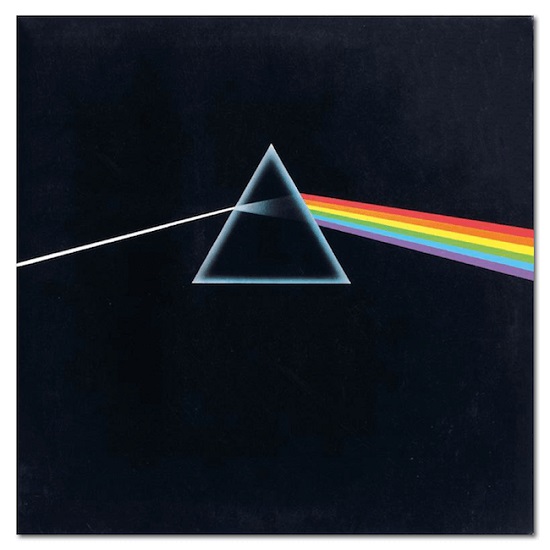
When it didn’t, it looked a lot like this (which proves that you can’t get it right all the time):
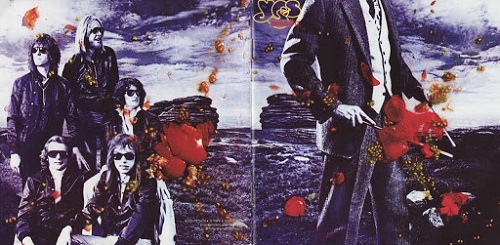
The gatefold sleeve doubled up the visual real estate (exploited perfectly on Thin Lizzy’s “Live and Dangerous” double album with a shedload of Chalkie Davies pics all over the outer and inner sleeves of the album):
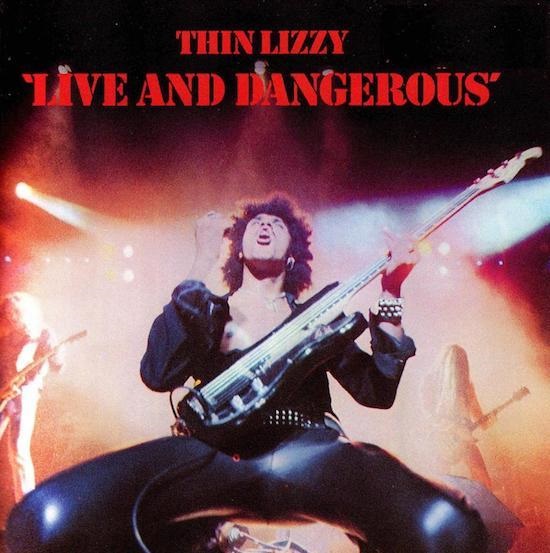
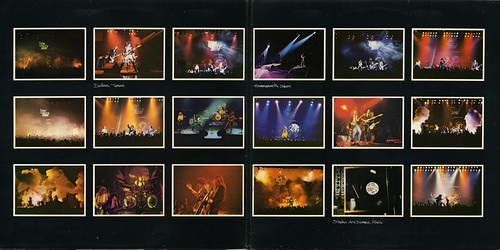
Designers started to exploit die-cut sleeves and all sorts of interesting innovations; PiL’s “Metal Box” looked really clever, but only if you hadn’t seen The Small Faces’ “Nut Gone Flake” packaging twelve years earlier.
The visuals were only part of the album experience; you could get a lot of text on a sleeve, particularly if you had a printed inner sleeve or three as well. There was all the obvious geek stuff; musicians involved, instruments played (or not played if you were Queen) and lyric sheets, but some bands made a real effort; UB40’s cover for the first album “Signing Off” in 1980 was a copy of the unemployment benefit attendance card, they’d been filling in before they broke through. Ten years later, Squeeze released a live album with a boxing concept, “A Round and A Bout” with a little bonus – they listed every gig they’d done between 1974 and 1990 on an insert with the album. Thanks guys, you’ve no idea how useful that’s been to me over the years. Seriously.
I’m sure you get the message by now. During the first vinyl era, the experience was about much more than just listening to the music. You could carry an album around at school as a sign of your taste and discernment and to impress the other gender (I pitied the guys who carried Groundhogs and Genesis albums, but that’s Darwinism for you). It was a bit like creating a mixtape a few years later and a playlist many years later. Or drinking bottled designer lager in the eighties. If you were a fan of music in the seventies or eighties you were committed and attached to it; it had a financial and emotional value. And it had a longer lifespan; since the mid-nineties, the norm is for singles and albums to achieve their highest chart position in the first week of release, but fifty years ago the climb to the top of the charts could take weeks (and probably a few bulk purchases in chart return shops to help it along).
This isn’t a dewy-eyed, rose-tinted trip down memory lane. The seventies and eighties weren’t perfect; the music business was still a business, but it was one where labels invested in bands with a view to development over several years. A moderately successful band writing their own material could make a living for a few years with royalties on sales, radio, juke box and club plays and independent labels were few and far between. Things are a bit more polarised these days; the business only supports guaranteed winners and everyone else has to do their own thing. Time for a bit of a polemic: the technology that enabled the digital revolution degraded our experience of music. Listening to compressed audio on inadequate playback systems is the norm for most people now, despite the vinyl comeback, and the majority of listeners don’t pay any attention to artwork, credits or sleeve notes. We’ve walked blindfold into accepting a gradual erosion of the musical experience in the name of progress and fashion. We also have at least one generation that doesn’t believe in physical musical formats and certainly doesn’t believe in paying for them.
Fortunately the same digital technology that devalued music by making no-degradation copying possible, then compression, along with affordable storage and massive improvements in internet bandwidth, have enabled affordable home recording. Technological improvements cut both ways and musicians are a resourceful bunch; if you can’t get a deal with a major label, what have you lost? You don’t need access to a studio; you can set up at home. You don’t need access to a major label’s mastering and pressing facilities; you can find any number of those online. You don’t need a distribution network; you can load your music up to download and streaming services and make peanuts, or you can sell CDs and albums on your website by mail order and alongside other merchandise at your gigs.
In normal times, this isn’t a bad business model; you might be able to stay afloat if you have another job, have good merchandise to sell on tour, or both. And along comes lockdown; no gigs and no pop-up shop opportunities. I wish I could honestly say that I recommended live streams, but it’s not for me; I really miss the eye contact and (selfishly) I miss the opportunity to take pictures at gigs. If it works for you, that’s great; enjoy it and make a contribution; I’ll be waiting for the moment when live music re-emerges after this terrible disease is brought under control.
Me, I’ll continue to avoid the mainstream by buying (in order of preference) vinyl or CDs directly from artists’ websites, from independent record shops and at gigs. Two people I know have opened vinyl shops in the last few years and both are succeeding despite the current trading situation; long may they continue.
And that resourcefulness and creativity that musicians always demonstrate wasn’t going to be stifled by any number of lockdowns; no way. All of those skills developed and equipment bought to set up home studios have been subtly repurposed to enable musicians to collaborate by sharing audio and video files online. I don’t know any musicians who see this as an ideal situation, but, like solitaire, it’s the only game in town. After nearly a year and millions of audio files bouncing around the internet, albums that were in progress have been completed remotely and albums have been conceived, gestated and born. It doesn’t matter how difficult you make life for musicians (or artists generally), they will always find an outlet.
Whenever we reach the new normal, whatever that may be, spend your money in a way that benefits the people making the music you love. Buy physical copies of music either directly from bands or from independent record stores – there are loads of them. Most importantly, get yourself out to as many gigs as possible. I’ll see you at the front.
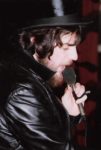 Strange the way things work out. This piece was programmed for publication today and by some quirk of fate it’s the same day that our long-time correspondent from ‘Up North’, Steve Jenner, achieved a lifetime ambition by starting his regular Sunday morning show on Caroline Flashback. Steve’s been in radio for many years, but he’s been a fan of live music for many more and 2020 has been a bit of a shock to the system. Here are some of the things he’s missed in this year of lockdown and its variants:
Strange the way things work out. This piece was programmed for publication today and by some quirk of fate it’s the same day that our long-time correspondent from ‘Up North’, Steve Jenner, achieved a lifetime ambition by starting his regular Sunday morning show on Caroline Flashback. Steve’s been in radio for many years, but he’s been a fan of live music for many more and 2020 has been a bit of a shock to the system. Here are some of the things he’s missed in this year of lockdown and its variants:
The Five Ritual ‘Live’ Things Missing from My Life This Year
 Anticipation.
Anticipation.
You get your ticket and as the date nears you start to think about it. What will the line-up be? Will they play my fave tune of theirs? How’s the new stuff going to play in a live setting? Will he/she be ‘on it’ or will it be a ‘routine gig’? Has it sold out? Will there be any proper beer?
 Going in.
Going in.
Milling about inside the venue, eyes getting accustomed to the dark, checking out the bar and the bogs, staking out a space, hearing the noise levels rise as the pre-event music kicks in and the punters start to flow through the doors. Getting that ‘tingly’ thing you do.
 Tension build-up.
Tension build-up.
Main act is habitually fashionably late and there is a palpable build up of tension / expectation in the crowd. There’s a bit of good-natured jostle near the front. Torches keep flicking on and off onstage and shadowy figures flit from mike to monitor and desk. The crowd starts a ‘stomping’ routine.
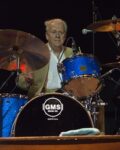 Bang.
Bang.
On they come, first song’s just a sighting shot but the second one’s a biggie. The crowd are singing like a Championship football crowd at a home game and the bass player cracks a smile at the drummer. We’re in!
 Off they go, and they’ve left nothing out there.
Off they go, and they’ve left nothing out there.
Mad stampede noises, roadie rushes to front mike and makes an adjustment and ducks away. Lights off, crescendo, on they come again and off we go into the best new album track, a Chuck Berry/Smokey Robinson/Insert name here followed by The Greatest Hit. Thangyewg’night! And you stand there, bathed in sweat, half-covered in somebody else’s beer, feeling like you’ve been run over by a truck. Time to go home via kebab/pizza/chipper/insert food here.
Here’s to 2021. Hang on in there until it happens. Big respect to everyone in the industry who have somehow found a way to survive ‘silent running’ and deepest empathy to those who have not.


